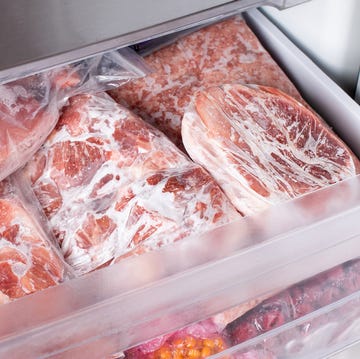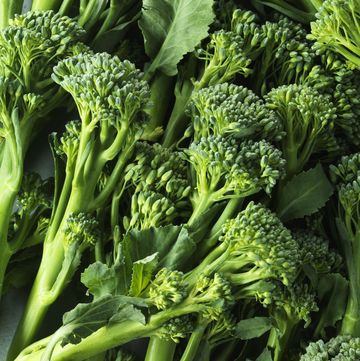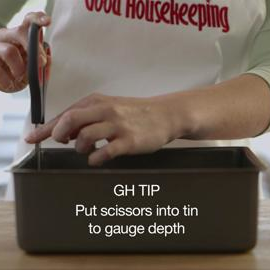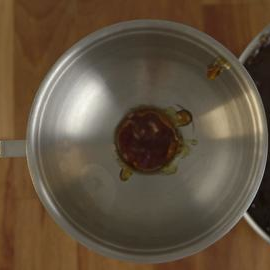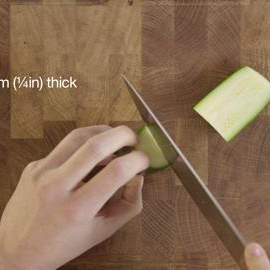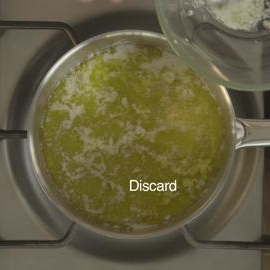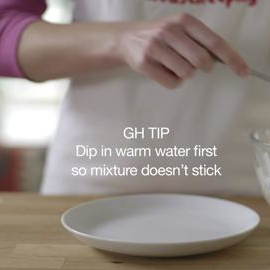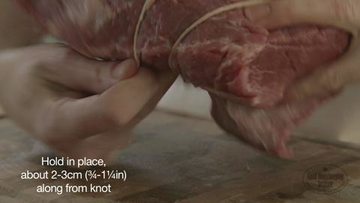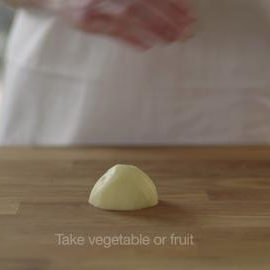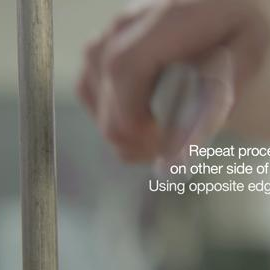1. Deep frying in a pan can be dangerous if you don’t take precautions. It’s essential that pan being used has a lid, to cover it if it catches fire, and have a damp tea towel to hand to smother any flames. Never leave pan unattended when cooking.
2. Use a pan with deep sides and fill pan no more than half full with a flavourless oil such as vegetable or sunflower oil. These oils have a high smoking point so can withstand high temperatures without burning. Don’t use olive oil as this doesn’t have a high smoking point. Leave at least a 10cm (4in) gap from level of oil to top of pan to allow for oil rising and bubbling during cooking.
What to read next
3. Make sure handles of pan are facing inwards. Preheat oil to cooking temperature. Use a probe thermometer, held upright in middle of oil to check temperature.
4. Pat food dry with paper towels before frying. External moisture on outside of foods can cause oil to splatter. Don’t get too close to oil. Use long tongs or a slotted deep fry spoon and remove foods carefully.
5. Deep frying is a fast process and smaller pieces of food will cook faster and more evenly than larger pieces. If deep frying larger pieces of raw meat, make sure oil isn’t so hot that outside burns before inside is thoroughly cooked.
6. For consistent results, cook in small batches – adding too much food at once will lower temperature of oil. Allow oil to return to correct cooking temperature each time, before adding next batch. Doing both of these things ensures food will be crisp on outside rather than soggy or greasy.
7. Drain cooked food on kitchen towel to absorb excess oil and keep food crisp Season with sea salt while still hot and serve immediately.
8. Once finished cooking, don’t move pan of hot oil leave to cool completely before emptying. Never dispose of fat by pouring it down drain.
Use your skills to make these triple-tested recipes:
Deep-fried fish recipe
Tempura recipe
More midweek meal recipes
Black two-tone wire skimmer, Montreux casserole (9 litre, 24cm), Kuhn Rikon UK. Classic glass measure jug (1 litre), Classic glass bowl (1 litre), Impressions ceramic ramekins, Pyrex. White ceramic bistro plate, Sophie Conran. Thermometer, chef's own.
A crack team of highly skilled food content producers, the GH Kitchen Team are Good Housekeeping’s resident recipe developers and all-round food obsessives. GH Kitchen Director Sarah Akhurst is our resident hosting pro and loves nothing more than putting on a foodie feast for friends. Senior Cookery Writer Alice Shields is a former pastry chef and baking fanatic who loves making bread and would have peanut butter with everything if she could. Lover of all things savoury, Senior Cookery Writer Grace Evans can be found eating nocellara olives at every opportunity, and will take the cheeseboard over dessert any time. With a wealth of professional kitchen experience between them, they’re dedicated to ensuring every Good Housekeeping recipe is the best it can be, so you can trust they’ll work every single time.

